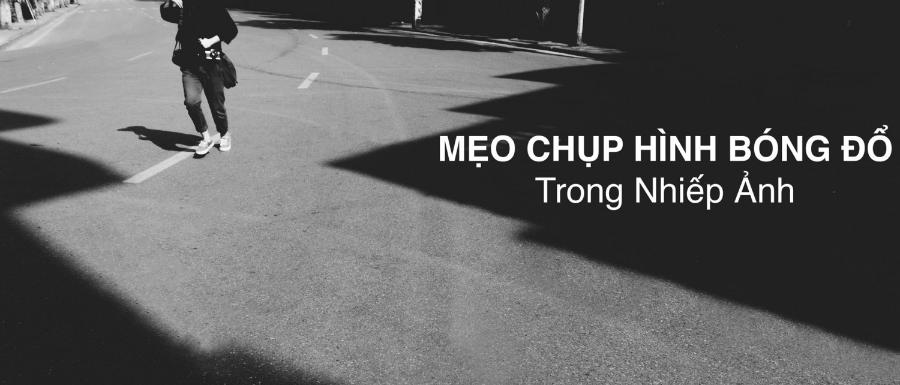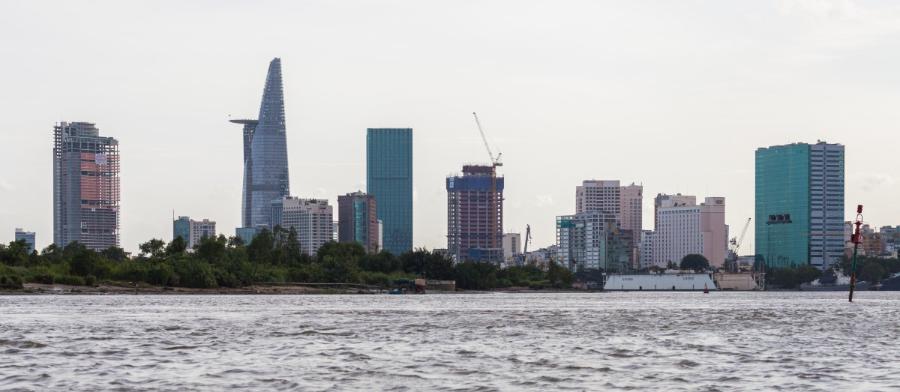Best Selling Products
Tips for Taking Shadow Photos in Photography That Not Everyone Knows
Nội dung
- 1. Why is shadow photography important in photography?
- 1.1. Create depth and structure
- 1.2. Enhance the sense of light and shadow
- 1.3. Create highlights for the photo
- 1.4. Evoke emotions
- 2. Statistics of Types of Shadows in Photography
- 2.1. Soft Shadows
- 2.2. Hard Shadows
- 2.3. Long Shadows
- 2.4. Feathered Shadows
- 2.5. Multiple Shadows
- 3. Tips for taking photos with shadows to make your photos more impressive
- 3.1. Take advantage of natural light
- 3.2. Create artificial shadows with flash or studio lights
- 3.3. Use light reflecting objects
- 4. Shadow adjustment techniques to highlight the subject
- 4.1. Create intentional shadows
- 4.2. Use shadows to create depth
- 4.3. Use light from the side
- 4.4. Use shadows to create shapes
- 5. Common mistakes when using shadows and how to fix them
- 5.1. Shadows are too hard or too soft
- 5.2. Shadows that obscure the subject
- 6. Conclusion
Tips for capturing shadows in photography, helping you create impressive and unique photos. Join SaDesign to learn how to effectively exploit shadows in each frame!

Silhouette photography is an interesting and creative technique in photography, helping photos become more vivid and have more depth. However, not all photographers understand how to exploit shadows effectively. In this article, SaDesign will share with you some tips for taking silhouettes in photography that few people know, so that you can create unique and attractive works of art.
1. Why is shadow photography important in photography?
Shadow photography is an essential technique in photography, as it gives a photo the depth and dynamic that only shadows can create. Shadows have the ability to highlight subjects, create a sense of space and depth, and create special lighting effects.
(1).jpg)
1.1. Create depth and structure
Shadows help to differentiate between elements in a photo, create hierarchy, and add clarity to the image. When light hits an object and creates a shadow, it helps the viewer perceive depth, width, and contours in the photo.
1.2. Enhance the sense of light and shadow
Soft or sharp shadows can create interesting lighting effects. This light-dark feeling makes the photo more dynamic and attractive. The combination of light and shadow can create the illusion of movement, giving the photo a sense of movement or stillness.
1.3. Create highlights for the photo
Shadows can highlight certain details in a photo, drawing the viewer’s eye to important areas. Using shadows wisely, you can make the main subject of the photo stand out, while also creating a background for other details to blend in more harmoniously and pleasingly.
1.4. Evoke emotions
Shadows can also create mystery, drama, or a sense of loneliness and nostalgia in photography. Depending on the sharpness, length, and shape of the shadow, you can convey different emotions through your photography. For example, soft shadows can create a sense of mystery, while sharp shadows can create a sense of tension.
2. Statistics of Types of Shadows in Photography
.jpg)
Shadows in photography can vary greatly depending on how you light them and where your light source is positioned. Here are some common types of shadows that photographers use to create beautiful, engaging photos.
2.1. Soft Shadows
Soft shadows are often found when the light source is large and diffuse, such as natural light on a cloudy day or light from an artificial light source with a diffuse surface. These shadows do not have sharp edges and tend to be wide and diffuse, creating a soft and natural feel. The characteristic of soft shadows is that they reduce strong contrasts, making the image soft and pleasant.
2.2. Hard Shadows
Sharp shadows occur when the light source is small or the light intensity is strong. When light falls directly on an object, it creates clear shadows with sharp edges. These shadows often have strong contrast, creating a sense of tension and power and are often used in dramatic works of art.
2.3. Long Shadows
Long shadows are often found in the early morning or late afternoon when the sunlight is at a low angle. These shadows are long and create a sharp contrast with the subject. They are often used to create a vintage, dreamy effect or to highlight the natural beauty of a scene.
2.4. Feathered Shadows
Soft shadows are shadows that have soft edges and gradually fade into the surrounding space. They are often created when the light source is a large, diffuse light source or when light reflects off different surfaces. Soft shadows often have the effect of softening lines and giving a pleasing, harmonious feel to a photograph.
2.5. Multiple Shadows
Layered shadows occur when multiple light sources hit an object at the same time, from different angles. The resulting shadows overlap, forming complex shapes. Layered shadows can create interesting and unique effects, often seen in abstract art or in photos where a richness of light is needed.
3. Tips for taking photos with shadows to make your photos more impressive
.jpg)
Adjusting shadows in photography isn't always easy. Here are some tips to help you use shadows more effectively in your photos.
3.1. Take advantage of natural light
Natural light is the easiest source of light and also one of the sources of light that creates soft and beautiful shadows. Especially at times of the day like early morning or sunset, natural light will help you create photos with very artistic shadows.
When taking photos in natural light, you can move your subject so that the light hits them at a certain angle, creating beautiful shadows on the background. This will add interest to the photo without having to use too much supporting equipment.
3.2. Create artificial shadows with flash or studio lights
When you are working in a studio or in low light conditions, a flash or studio light is the best option for creating artificial shadows. It is important to position the light so that it hits the subject and creates the desired shadows.
By adjusting the angle of the light, you can create different shadow effects, from soft to hard, depending on your intention. To create beautiful shadows, the light must be used properly, avoiding too strong or too weak light.
3.3. Use light reflecting objects
A great tip for shooting silhouettes is to use reflective objects like reflectors, foil, or even light-colored surfaces like glass. These will help you manipulate the light and shadows to create a softer, more subtle image.
With a well-placed reflector, you can soften the shadows or make them appear sharper. This is a simple but effective technique for creating balance in your photo.
4. Shadow adjustment techniques to highlight the subject
.jpg)
Shadows can be a useful tool for highlighting the subject in a photo. When applying this technique, you need to pay attention to adjusting factors such as the position of the subject and the light source so that the shadow does not take away from the main subject.
4.1. Create intentional shadows
To create intentional shadows, you need to be clear about the subject you want to highlight and where you want to use the light. A strong shadow can accentuate the outline of a subject, while a soft shadow can create a soft, gentle feel. Adjusting the shadow to match the subject is an important factor in making the photo more impressive.
4.2. Use shadows to create depth
Shadows are also a useful tool for creating depth in a photo. When there is contrast between light and shadow, the photo will have more depth, avoiding a flat image. You can use shadows to highlight small details on the subject, while also creating an open space in the photo.
4.3. Use light from the side
When you shine light from one side of your subject, the shadows will be more pronounced and create layers in the photo. This makes the photo more dynamic and interesting. Try adjusting the angle of your light source to test out the different effects that shadows can have.
4.4. Use shadows to create shapes
When photographing three-dimensional objects, shadows can help you highlight their features, making their shapes more distinct. Instead of just focusing on the light shining directly on your subject, try using shadows to add depth and structure to your photo.
5. Common mistakes when using shadows and how to fix them
Whether you are a professional photographer or a beginner, it is inevitable that you will make mistakes when using shadows. Here are some common mistakes and how to fix them:
5.1. Shadows are too hard or too soft
One of the most common mistakes when shooting silhouettes is creating shadows that are too hard or too soft. To fix this, you need to adjust your lighting to suit your needs. If your shadows are too hard, try using a soft light source or diffusing the light with tools like a softbox.
5.2. Shadows that obscure the subject
If the shadow is too large or placed incorrectly, it can obscure the main subject in the photo, causing a loss of clarity. To avoid this, check the position of the shadow before taking the photo and adjust the lighting so that the shadow does not obscure important details.
6. Conclusion
Silhouette photography is an interesting technique that helps create artistic and deep photos. However, to master this technique, you need to understand the types of shadows and how to adjust the light appropriately. Hopefully, with the tips and suggestions in the article above, you will be able to effectively apply the silhouette photography technique in your photos. Don't forget to learn more about Sadesign's professional photography services to enhance your photos!












































